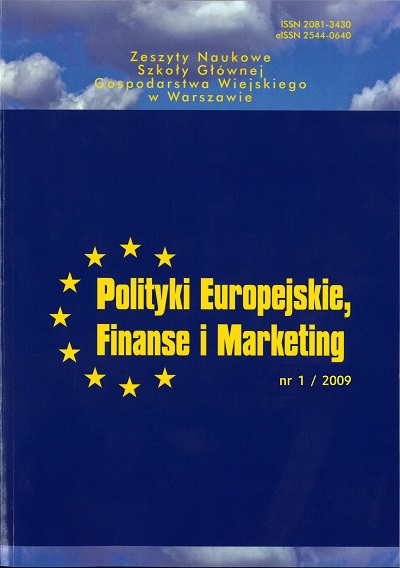Main Article Content
Article Details
Bański J. (1999).Obszary problemowe w rolnictwie polskim. Prace Geograficzne, (172), Warszawa.
Frenkel I., Rosner A. (red.) (1995). Atlas demograficzny i społeczno-zawodowy obszarów wiejskich w Polsce. Polskie Towarzystwo Demograficzne - Instytut Rozwoju Wsi i Rolnictwa PAN, Warszawa.
Grosse T. G. (2002). Przegląd koncepcji teoretycznych rozwoju regionalnego. Studia Regionalne i Lokalne, (1), 25-48.
Heffner K. (2003). Regiony peryferyjne we współczesnej gospodarce. [w:] A. Bołtromiuk (red.), Regiony peryferyjne w perspektywie polityki strukturalnej Unii Europejskiej. Wyd. Uniwersytetu w Białymstoku, Białystok 2003.
Rosner A. (red.) (2002). Wiejskie obszary kumulacji barier rozwojowych. Instytut Rozwoju Wsi i Rolnictwa PAN, Warszawa.
Rosner A. (red.) (2007). Zróżnicowanie poziomu rozwoju społeczno-gospodarczego obszarów wiejskich a zróżnicowanie dynamiki przemian. Instytut Rozwoju Wsi i Rolnictwa PAN, Warszawa.
Rosner A., Stanny M. (2007). Przyjęta struktura procesu badawczego poziomu rozwoju społeczno-gospodarczego. [w:] Zróżnicowanie przestrzenne poziomu rozwoju społeczno-gospodarczego obszarów wiejskich a zróżnicowanie dynamiki przemian, IRWiR PAN, Warszawa.
Stanny M. (2007). Zróżnicowanie struktur demograficznych a stopień zrównoważenia rynku pracy na obszarach wiejskich w Polsce, [w:] K. Malik, (red.), Prognozowanie rozwoju regionu. Instrumentarium rozwoju. Ład społeczny, Politechnika Opolska - Samorząd Województwa Opolskiego - KND PAN - KNoPiPS PAN - KPZK PAN, Opole.
Wilkin J. (2003). Peryferyjność i marginalizacja w świetle nowych teorii rozwoju. [w:] A. Bołtromiuk (red.), Regiony peryferyjne w perspektywie polityki strukturalnej Unii Europejskiej. Wyd. Uniwersytetu w Białymstoku, Białystok 2003.
Downloads

This work is licensed under a Creative Commons Attribution-NonCommercial 4.0 International License.
All articles published in European Policies, Finance and Marketing are fully open access. In this way, the scientific research results contained in articles published in our journal are available to every reader free of charge - in accordance with the CC BY-NC license (https://creativecommons.org/licenses/by-nc/4.0/).
According to the CC BY-NC license you are free to:
- Share — copy and redistribute the material in any medium or format
- Adapt — remix, transform, and build upon the material
The licensor cannot revoke these freedoms as long as you follow the license terms.
Under the following terms:
- Attribution — You must give appropriate credit , provide a link to the license, and indicate if changes were made . You may do so in any reasonable manner, but not in any way that suggests the licensor endorses you or your use.
- NonCommercial — You may not use the material for commercial purposes .
- No additional restrictions — You may not apply legal terms or technological measures that legally restrict others from doing anything the license permits.
Source: https://creativecommons.org/licenses/by-nc/4.0/deed.en
According to that, the authors retain the copyright and full publishing rights.





